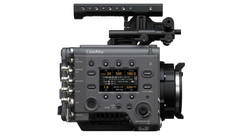The easiest way to prepare the USB media to perform the update is to format it on a PC using the FAT32 file system and a block size of 32KB. If you're on a Mac, the process is a little less straightforward. You'll need to use the Terminal app, included with all recent versions of macOS, to enter text commands. And, as with anytime you are formatting storage devices, the risk of accidentally targeting the wrong device exists and could result in the loss of critical system data. If you're not comfortable using the command line, you might want to either use a PC, as stated above, or find a technically savvy friend or colleague to assist you.
Below are the steps we used to prepare the USB storage device, an 8GB thumb drive in this case (4GB is the minimum size needed to perform the update).
1. Insert the USB thumb drive into a free USB type-A port on your Mac
2. Open Disk Utility (usually found in Applications → Utilities)
3. Locate the USB drive you inserted in step one; note the disk number from the main window listed under 'Device' (e.g. 'disk2')
4. Click Unmount from the main toolbar, or choose Unmount from the File menu. Leave the thumb drive plugged in.
5. Open Terminal.app, usually found in Applications → Utilities
6. Type the following at the command line prompt:
diskutil list
7. You should see a list of all connected storage devices. Again, note the disk number associated with the USB thumb drive under the 'IDENTIFIER' column and device path listed on the left (e.g. '/dev/disk2')
8. Type the following command to format the USB thumb drive (NOTE: this will erase all information on the drive). Substitute a simple name for the thumb drive for devicename (e.g. 'r7firmware') and the device path from step 3 (e.g. '/dev/disk2'):
sudo newfs_msdos -F 32 -c 64 -v devicename devicepath
Note: you'll be asked for your macOS login password in order to run 'sudo'.
You should see a confirmation message similar to the following:
newfs_msdos: warning: /dev/disk3 is not a character device
512 bytes per physical sector
/dev/disk3: 15970432 sectors in 249538 FAT32 clusters (32768 bytes/cluster)
bps=512 spc=64 res=32 nft=2 mid=0xf0 spt=32 hds=255 hid=0 drv=0x00 bsec=15974400 bspf=1950 rdcl=2 infs=1 bkbs=6
The warning about the drive not being a character device can be safely ignored.
Now, remove and re-insert the thumb drive. It should show up on the desktop with the name given in step 8. You can now proceed with copying the firmware as detailed in the PDF that accompanies the firmware (AXS-R7_UpdateManual_E.pdf).



















